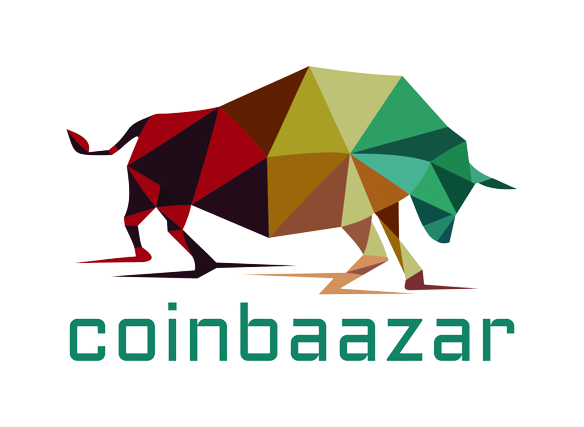the Campaign to Change Bitcoin’s Code by Environmentalists
Campaigners explain why they believe that all it takes is a few powerful corporations and individuals to change Bitcoin’s fundamentals.
In March, the idea that environmentalists would start a campaign to change Bitcoin’s code away from the energy-intensive proof-of-work (PoW) mechanism was laughed at by many bitcoiners.
Even if you set aside the question of whether or not proof-of-work mining is as bad for the environment as environmentalists say it is, many cryptocurrency experts doubt that the method will work.
This method is based on convincing a small number of companies or people who, activists say, have the power to make the change or at least convince a critical mass of others to support it.
The organisers of the “Change the Code, Not the Climate” campaign acknowledge this history and even use it as proof that change is possible.
Making sense of Bitcoin’s past
The block size conflicts and the SegWit update “provide a case in point” to demonstrate that “changes can be accomplished,” according to Faber, senior vice president, government affairs at Environmental Working Group (EWG), one of the campaign’s spearheaders. Whether these changes are made through a “hard fork” or a “soft fork,” he thinks they can be made “when the Bitcoin community as a whole agrees.”
What is SegWit and how does it work?
Rolf Skar works as a special projects manager for Greenpeace USA, an environmental advocacy group that is involved in the campaign. According to Skar, there are two crucial considerations to consider when determining whether the network can change: First, is it technically feasible? Skar told CoinDesk that the 2017 SegWit update “shows that it is, quite obviously, technically feasible to do so.” The second question, he said, is “if a proposed change could get enough support to be put into place.”
“Despite skepticism,” added Skar, “the campaigners don’t see a clear reason why enough support won’t be garnered ultimately.” “In order to address legitimate community concerns, solutions will need to be created and tested.” “We acknowledge that if appropriate solutions are not established, adoption of the new code would be difficult,” Skar stated.
Given how companies have sneered at other environmental initiatives, such as electric lorries, which were mocked at first but then sold in droves, a shift away from PoW may not seem so farfetched, according to the advocates.
Based on his talks with key insiders in the Bitcoin business, Ken Cook, the founder and CEO of EWG, believes that Bitcoin’s governance has changed and that there is now an “inexorable concentration of power and influence.” This belief is based on his talks with key insiders in the Bitcoin business.
He claimed that the “idea that this was as democratic as it was originally envisaged” had vanished.
“Although it’s a decentralised system, there are critical actors within it,” Skar said of Bitcoin in an interview.
According to EWG’s Cook, according to the research published by the National Bureau of Economic Research in October 2021. top 10% control 90% of all bitcoin mining capacity, while the top 0.1 percent control close to 50%,” and “the top 55–60 miners control at least half of all bitcoin mining capacity.”
Faber believes that the choice will not be decided by a group of 50 individuals, but that if Bitcoin leaders “raise their voices,” they may help start the dialogue that will eventually lead to the necessary adjustments.
Who is in charge of Bitcoin?
In 2015, a discussion on how to improve the Bitcoin network’s scalability gained traction. Some developers and other stakeholders pushed for a bigger block size, while others thought it would hurt the decentralised nature of the system.
After two years of debate, the Bitcoin network’s Segregated Witness (SegWit) update was approved via a soft fork, allowing users to continue using the old version of the programme. By altering the way data is kept on the chain, SegWit boosted the number of transactions the network could handle. Unlike prior ideas to raise block size, SegWit was well-received by users.
Another suggestion to expand the block size was rejected at the same time. At CoinDesk’s 2017 Consensus conference in New York, 58 organisations signed an agreement representing 83.28 percent of the network’s computing power. The agreement called for the maximum block size of Bitcoin to be doubled to two megabytes. Four of the companies were actively involved in mining, including CoinDesk’s parent company, Digital Currency Group (DCG), which also owns Foundry, a US miner. Mining pools made up the remaining seven signatories.
Six months later, however, the ostensibly strong signatories backed down and cancelled the hard fork, or backward-incompatible code change, citing a lack of consensus. Bitcoin Cash is a breakaway network created by some big-block proponents.
Skar remarked that “five years is a long time in Bitcoin’s very short existence” when asked about the block size debate and the fact that some modifications were never implemented. Things have changed, as have the challenges at hand. ” He believes that it is up to the individuals and players in the Bitcoin social ecosystem to decide how the change will happen.
According to Faber, SegWit was implemented because the Bitcoin community recognised its importance to the network’s success. According to the EWG vice president, Bitcoin now faces a new threat: regulation.
For the time being, “the Bitcoin community is in charge of deciding how to limit the amount of electricity needed by PoW and the related climate pollution.” But only for a short time. “Regulators will not stand by while the climate problem worsens and digital currencies like bitcoin consume more and more electricity and emit more and more greenhouse gases,” Faber added.
The difficulty of modifying Bitcoin by consensus
Even if it were possible, changing the protocol is only part of the picture. Jonas Nick, a Bitcoin developer at Blockstream who worked on another major protocol update called Taproot last year, said that getting a “rough community consensus” was an important step for the upgrade to be put into place.
The number of reachable nodes in the Bitcoin network is one indicator of its decentralization. Since 2017, the number of Bitcoin nodes that can be reached has increased by 27.5 percent. The block size wars showed that users have control over the direction of the protocol. This means that it will take more coordination to make major changes to the network.
When asked if it’s possible to move Bitcoin away from PoW, Nick said the Bitcoin community agrees that PoW “is the only known consensus algorithm that can power a decentralised currency.”
People have tried to switch to Bitcoin through various forks, according to Andrew M. Bailey, who teaches about cryptocurrencies at the joint Yale-National University of Singapore College, but the value of these coins tends to plummet “very, very quickly.”
“What that implies is that the vast majority of Bitcoiners will just sell their forked proof-of-stake coin,” he said, adding that “the only way to make it happen is to achieve social consensus” from the whole community.
According to Bailey, this unanimity is “extremely unlikely” because Bitcoin has a “conservative development culture,” in which changes are made slowly and only when the community is certain of the consequences.

